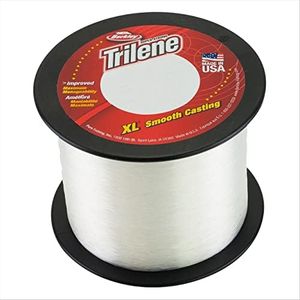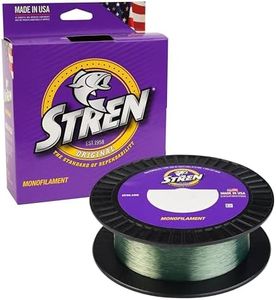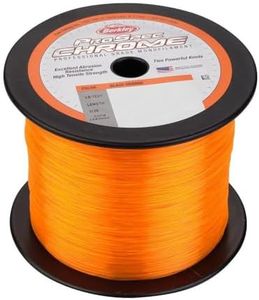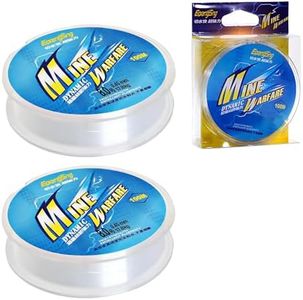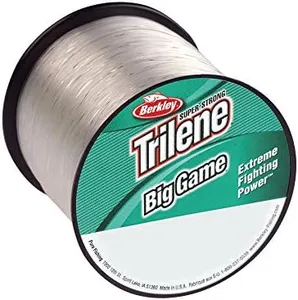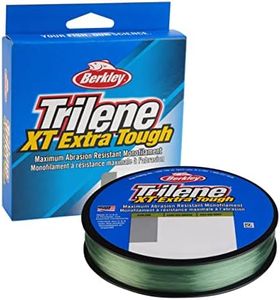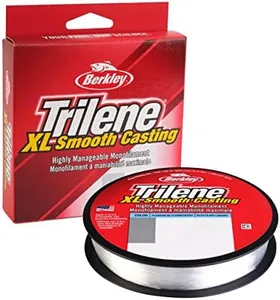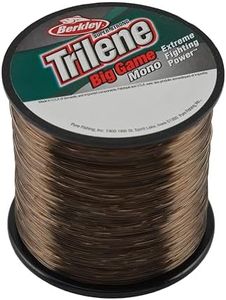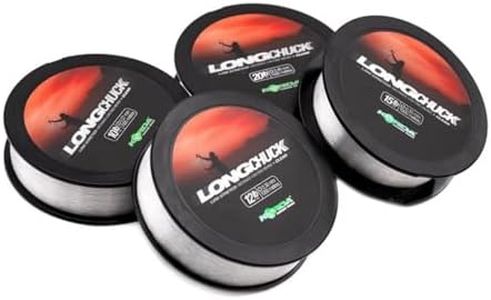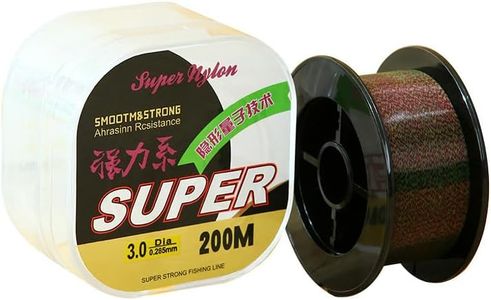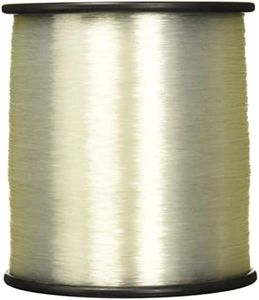We Use CookiesWe use cookies to enhance the security, performance,
functionality and for analytical and promotional activities. By continuing to browse this site you
are agreeing to our privacy policy
10 Best Monofilament Fishing Line
From leading brands and best sellers available on the web.Buying Guide for the Best Monofilament Fishing Line
Choosing the right monofilament fishing line can make a big difference in your overall fishing experience. Monofilament lines are popular for their ease of use, flexibility, and affordability, making them suitable for many anglers, from beginners to experienced fishermen. When selecting a monofilament line, it's important to understand the different features and specifications, as each one can affect how your line handles, its strength, visibility in water, and overall performance. Think about the type of fishing you plan to do, the species you're targeting, and the environment you'll be fishing in. This will help you pick the best line for your needs and ensure a successful trip.Pound Test (Breaking Strength)Pound test, sometimes called breaking strength, tells you how much weight the line can handle before it breaks. This is crucial because it needs to match the size of fish you're targeting—using a line that's too weak may result in break-offs, while an overly strong line can be unnecessarily thick and more visible to fish. Typically, lighter pound tests (2-6 lb) are used for small fish in freshwater, medium-pound tests (8-12 lb) suit most bass or walleye fishing, and higher pound tests (14-30+ lb) are for bigger fish or saltwater fishing. Think about the average fish size at your location and choose a pound test that gives you some margin for handling surprises, but not so heavy that it makes casting or presentation difficult.
Line DiameterLine diameter refers to how thick the fishing line is. This affects visibility in water, casting distance, and how well the line behaves on your reel. Thinner lines are less visible and often cast further, which can be an advantage in clear water or when fish are wary. Thicker lines are generally stronger and more abrasion-resistant but may be more visible and limit your casting range. If you're fishing in heavily structured areas or where sharp rocks may cut a thin line, slightly thicker options can provide security. Match the diameter to your fishing environment and the need for stealth or strength.
StretchStretch is how much the line elongates when pulled. Monofilament naturally has more stretch than some other types, which can be helpful for absorbing sudden shocks from fighting fish—this can prevent break-offs and help land more catches. However, too much stretch might reduce your sensitivity and make it harder to feel subtle bites. If you fish for species that fight hard or jump (like bass or trout), a line with moderate stretch is forgiving. If you need better sensitivity for detecting light bites, look for monofilament labeled as 'low stretch.' Your preferred fishing technique can guide whether you want more or less stretch.
Abrasion ResistanceAbrasion resistance tells you how well the line holds up against rough surfaces like rocks, wood, or heavy vegetation. If you often fish in areas with lots of obstacles that can rub or cut your line, look for lines marketed as abrasion-resistant. These will last longer in tough conditions but may be a bit stiffer or thicker. If you fish in open, clear water with fewer obstructions, abrasion resistance is less critical, and a smoother, more flexible line can enhance casting and handling.
Visibility/ColorThe color or visibility of the line determines how easy it is for you—or the fish—to see the line in water. Clear or low-visibility green lines blend well in most environments, making them ideal for wary fish and clear water. High-visibility lines (like fluorescent colors) help you see your line above water, which is useful for detecting subtle bites or managing multiple rods, but may spook some fish in clear conditions. Consider the clarity and color of the water you fish most and pick a line color that balances your need to see the line with not alarming the fish.
MemoryMemory refers to a line's tendency to retain the shape of your spool, which can lead to loops and tangles when casting. High-memory lines can make casting and handling tougher, especially after the line has been stored on your reel for a while. Low-memory lines are more manageable, coming off the spool smoothly and tangling less often. If you value easy casting and minimal frustration, seek out monofilament lines advertised as having 'low memory.' If you regularly replace your line, or only fish occasionally, this may be less of a concern.
